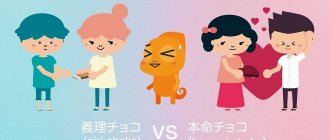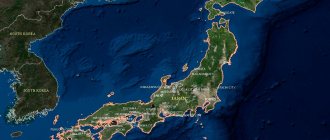So, the eight-hour working day came to an end. The most important work for today is done, and everything else can wait until the morning. This is what almost every employee thinks when leaving the office in the evening. But not millions of Japanese corporate employees, for whom leaving work to get home in time for dinner can lead to serious accusations of lack of loyalty to their company.
According to 2021 data, almost a quarter of Japanese employers allow their employees to overwork 80 hours per month. Moreover, these overtime hours are not paid, because workers do this of their own free will. In addition to this, the Japanese do not take the rest time they are entitled to by law, and if they take their entire legal paid leave, they feel guilty.
How many work in different countries of the world?
The latest labor market research from the Organization for Economic Co-operation and Development (OECD) looks at the number of official working hours per year in 38 countries around the world. It is noteworthy that countries such as Germany, Denmark, Switzerland, Austria and Luxembourg occupy some of the last positions on the list, while the leaders are Mexico, Costa Rica and South Korea.
Working time table in some countries of the world
| A country | Working hours per year | A country | Working hours per year |
| Mexico | 2255 | Spain | 1695 |
| Costa Rica | 2212 | Great Britain | 1676 |
| South Korea | 2069 | Australia | 1669 |
| Greece | 2035 | Finland | 1653 |
| Russia | 1974 | Sweden | 1621 |
| Poland | 1928 | Austria | 1601 |
| Israel | 1889 | Switzerland | 1590 |
| Türkiye | 1832 | Luxembourg | 1512 |
| USA | 1783 | France | 1472 |
| Czech | 1770 | Norway | 1421 |
| Italy | 1730 | Denmark | 1410 |
| Japan | 1713 | Germany | 1363 |
| Canada | 1703 |
According to official data, Japan is not in first place in the world in terms of working hours, but this is official. If you add overtime of 80 hours per month, you get more than 2,500 hours per year. Thus, Japanese employees will leave workers from other countries far behind.
Holidays to the rescue
However, many countries successfully add insufficient vacation time to national holidays, which are also weekends. For example, in Colombia and India, holidays last a total of 18 days; in Lebanon, South Korea and Thailand - 16 days; in Japan, Slovakia, the Philippines and Cyprus - 15 days.
The lucky ones were the residents of Austria and Malta, who, taking into account national holidays, rest for 38 days.
In Russia, the number of holidays that are considered weekends is 14 days. That is, the total number of weekends in our country is on average 42 days. So we don't have to complain.
"Death by overwork"
The term "karoshi" means "sudden death from fatigue at work." "Karoshi" in Japan may be officially recorded as the cause of death.
An employee of the largest Japanese advertising holding company Dentsu suddenly died at work in 2015. The cause of death was then recognized as depression due to work overload. The incident drew widespread attention and public condemnation of Japan's habit of endless overtime.
Dentsu was fined for gross violations of labor laws, as facts of 100-hour monthly overtime were revealed. Dentsu later changed its approach to the working hours of its staff. For example, lights were turned off in offices after 10 p.m. to prevent employees from staying late.
Is it possible to travel freely around Russia now?
At the moment, you can travel freely throughout Russia, if regional restrictions do not prohibit this.
From June 16 to July 31, 2021, the third stage of the cashback program for trips around Russia is taking place.
For Russians who will vacation in any region of the Russian Federation from October 1 to December 24, 2021 as part of the cashback program from Rostourism, the government will return up to 20 thousand rubles to the MIR card.
How to get up to 20,000 ₽ for a vacation in Russia in 2021?
- Prepare your WORLD card . If you don’t have one, get one: this is a mandatory condition for participating in the cashback program.
- Register your card on the website privetmir.ru . Just enter your MIR card number, it will take less than five minutes.
- Select a tour or other offer on the website worldtravel.rf . The cashback program can apply to both hotel and sanatorium accommodation and the entire cost of a tour or cruise on travel dates from October 1 to December 24, 2021.
- Until July 31, 2021, pay for your vacation with a MIR card . Payment is made from the tour operator, on the hotel website or upon check-in. Minimum trip duration is 2 nights.
- Receive 20% cashback on the same card after your trip ends. The maximum cashback amount for one payment is 20,000 rubles. The number of purchases is unlimited.
A selection of mountain hotels in Russia, where you can breathe beautifully, will help you get inspired to travel around your native country this year.
And the best bath resorts in Russia and 11 juicy ideas of where to go in Russia in the summer will help wash away your worries.
What quarantine measures are in effect in the regions of Russia
Many regions of Russia have special quarantine restrictions.
Wearing masks in public transport, shops and crowded places is mandatory or recommended everywhere.
In some places, new requirements have been introduced for entry and check-in into hotels, sanatoriums and guest houses. In some parts of Russia, certificates of absence of coronavirus are required.
Also, mass and entertainment events are being restricted throughout Russia. Be sure to check your local government websites for current regulations and local safety precautions before traveling.
Is it worth going to Kamchatka now? Is it open there?
Since last fall, electronic passes for entry to Kamchatka have been cancelled.
Now, to see the Valley of Geysers and majestic volcanoes in Russia, you only need a certificate of absence of coronavirus. If you have not taken such a test at home, you can do a rapid test at the Petropavlovsk-Kamchatsky airport.
Read what to see and how to save money in Kamchatka.
Fighting "karoshi"
Now the Japanese authorities and employers are actively working to combat karoshi. The government has legally limited the number of hours spent in offices and introduced mandatory rest between the end of the previous and the beginning of a new working day.
In 2021, a new holiday appeared in Japan - Mountain Day. It is dedicated to the numerous mountains of this country, and by decision of the authorities it has become an annual official holiday. This will increase the number of Japanese holidays per year to 16. Holidays in Japan are considered a generous gift from the government to dedicated employees. In May, for example, during the so-called Golden Week, three holidays are celebrated: Greenery Day, Constitution Day and Children's Day. At this time, business life in the country practically comes to a standstill.
Not long ago, the country's government introduced the so-called “Premium Friday”, when employees are allowed to leave work at 15:00 on the last Friday of each month. However, according to surveys, only 4% of Japanese employees leave their jobs this early. As a rule, office workers in Japan come to work half an hour earlier, at 8:30, and finish work late in the evening. For them, this country is home to special stores where you can buy a clean shirt, and capsule hotels where you can spend the night if going home after work no longer makes sense.
Nutrition
I was very pleased with the food in Japan. There is a lot of fish in the rolls, a lot of meat in the noodles, and the prices are lower than in Europe and Moscow. We ate breakfast at a coffee shop, ate out once or twice a day, and bought snacks at supermarkets.
In Tokyo, small supermarkets are everywhere. There were three not far from our hotel: chain 7-Eleven, Lawson and Family Mart. The best part is that they work 24 hours a day. Prices are approximately the same everywhere; in terms of assortment, those that are larger in area win.
Every supermarket has a microwave, Wi-Fi and a place to eat. Almost everywhere there are toilets and smoking rooms. And also trash cans. This is important because there are very few trash cans on the streets of Tokyo. By the way, the seller may not allow you to throw away the garbage you brought with you, because recycling it costs a lot of money.
All labels are exclusively in Japanese, and the staff speaks little English, so when purchasing you had to guess by appearance or take more or less understandable products.
The most unpleasant thing I came across were soybeans. They are slimy and smell very unpleasant. Once I bought rolls, thinking they were with fish. There were these beans inside. The rolls had to be thrown away because it was impossible to eat.
Prices for products of European and American brands are much higher than ours: for example, a small Snickers will cost 100 rubles. But why is it needed if there are so many local delicacies around! I tried local pastries every day. To tell the truth, the Japanese don’t know how to make buns and puff pastries, like in Russia, Spain or Portugal, but I liked the crispy sticks in chocolate, marshmallows with berry filling, mochi rice cakes and dorayaki - something like pancakes with chocolate filling.
Supermarkets sell hot fast food and packaged ready meals. It's easy to eat healthy in Japan because you can easily buy fresh salad, boiled chicken breast, or even boiled eggs.
Photo by the author
Most often, we took onigiri on the road - these are triangles of rice, sometimes with filling. At times we missed out and bought onigiri, which consisted of just rice, and sometimes we came across tuna with mayonnaise or other fish. Onigiri, which are sold in markets, is much “richer” - there is a lot of fish, shrimp or caviar inside.
We brought noodles to our room several times. There is a rich assortment here and the noodles are much tastier than on Russian shelves. I liked the vegetarian one, it had a lot of corn and some green leaves. The pasta itself is thicker and brighter in taste.
Almost every day we had breakfast at the Veloce chain coffee shop near the hotel. There is a smoking room there. On weekdays, the Japanese sit in dark suits, drink coffee, smoke and look at their phones. We took a combo, which cost 215 rubles in Russian currency: a drink and a sandwich. It was very tasty: soft bun with a crispy crust, tuna, cheese and lettuce.
Photo by the author
To save on food, you just need to not be lazy and walk the extra five minutes and don’t be embarrassed to immediately look at the menu and leave if you don’t like it. The Japanese line up in standing establishments, and in empty restaurants they wait only for tourists.
On New Year's Eve we walked through the Ginza district and saw through the cafe windows many Japanese people at small tables. We immediately wanted to come in. It turned out to be a chain cafe called Sushi Zanmai, which has very friendly employees, reasonable prices and delicious dishes.
Photo by the author
Another chain establishment is Sukiya. There are as many as 27 cafes of this chain in Tokyo. There you can have a very satisfying meal for 300–400 rubles. I took rice with beef, vegetables and cheese.
In the center of Tokyo there is a wonderful place to taste local delicacies and buy delicious gifts to take home. This is Tsukiji Uogashi Market. Not to be confused with the Tsukiji Wholesale Market, where the famous fish markets are held. He worked in one place for 83 years, and in October last year he moved to the Toyosu area.
Tsukiji Uogashi is a retail market. It is located next to Tsukiji Honganji Temple - this is the main temple of the Jodo-Shinshu Buddhist school, you can stop by on your way to the market.
The first time we came to Tsukiji to have breakfast and look at prices, and the second time we visited on the day of departure. I would even recommend staying closer to the market to eat there more often, because the food there is very fresh and costs less than in a cafe.
You’ll have to eat right on the street on improvised chairs and tables using improvised materials, but it’s even tastier this way. We tried real crab meat - 3,000 yen (1,750 rubles) per claw. We indulged in rolls and onigiri: 180–260 yen (105–150 rubles) per serving. Octopus and shell skewers - 600 yen (350 rubles) per serving.
Photo by the author
Photo by the author
Holidays in Japan
Working people in Japan avoid taking long vacations, unlike people in European countries who usually like to go on vacation for several weeks. Some Japanese employees admit to feeling anxious and uneasy when they leave their workplace for long periods of time. The Japanese do not count their vacations in weeks, but exclusively in days. Just as they try to extend their working hours by staying late at work, they do the same with vacations, reducing them to the maximum in order to get back to work as quickly as possible.
Instead of a summer vacation, people here prefer to take a few days off in August during the traditional three-day Obon festival and during the New Year holidays, which in Japan last from December 29 to January 3.
Vacation the European way
Residents of Europe can boast of having the longest paid holidays in the world. Vacation here is usually at least 20 days, but there are also several countries whose residents vacation for almost a month.
For example, in Finland official vacation lasts 30 days, in the UK - 28 days, in Poland - 26 days. In at least 6 European countries, vacation is 25 days.
Residents of Asia and North America are among the least likely to take time off from work. Thus, in Hong Kong, Singapore, Pakistan and Vietnam, official vacation lasts 14 days, in India and Indonesia - 12 days.
Canada provides its residents with a vacation of 10 days, but regional authorities have the right to increase it to 15. The Chinese also have a vacation of 10 days, but no regional concessions are provided in the PRC. Very short holidays in Thailand and the Philippines - 6 and 5 days, respectively.
In the United States, there is no paid vacation at all.
The great power of the team
The Japanese are a nation with a strong sense of collectivism. Hence the great passion for traveling as part of tour groups. The second point is the love of order and organization. The average Japanese would prefer to thoroughly study the travel program, have a certain set of excursions and a paid hotel room before leaving for a tour abroad. Therefore, the Japanese, as a rule, entrust their vacation to specialists from travel companies.
It is known that Japan is famous not only for the excellent quality of its products, but also for its high level of service. In this regard, there is no need to expect a trick from a travel company in the Japanese Islands. If a Japanese person gives money, he can be absolutely sure that he will spend his vacation exactly as the travel agency told him. Stories about the sudden ruin of a company and tourists abandoned somewhere abroad are not about the Japanese.
Another reason that forces our eastern neighbors to use the services of tourism industry professionals is their poor knowledge of foreign languages, even English. Although now young people speak a little foreign.
Residents of Japan take great pleasure in traveling to the countries of Southeast Asia. The Japanese are known to be fond of playing golf. However, at home this fun costs them too much. But in Taiwan, getting onto the green field with a club will cost an order of magnitude cheaper.
There is also domestic tourism in Japan. Almost every prefecture has a well-established service sector, an ideal transport infrastructure and something to see. Traveling around the country is convenient. A good example is the so-called “set”, which includes a round-trip ticket on a high-speed train and a hotel room. Thus, you can, for example, see the sights in Kyoto, and even save money. The advantage of purchasing the complex is its price. Buying a complete set will be more profitable than buying everything separately.
There are several traditional times in Japan when large numbers of people travel around the country. First of all, this is “Golden Week”. It falls at the beginning of May. A series of holidays and excellent weather allow many Japanese to realize their long-time dreams. Another occasion is the Obon holiday. There are several days in August when Japan commemorates the dead and visits the far corners of the country where ancestors once lived. Despite the love of the general mass of Japanese for traditional and reliable recreation, there are still eccentrics with oddities in the country. A Russian diplomat I knew who worked in Japan told how in the “roaring nineties” a local resident approached him. He was preoccupied with the search for extreme sports and thrills. According to the Japanese logic, such a “vacation” could be offered in Siberia. The representative of the Land of the Rising Sun wanted to get into trouble and become a victim of a robbery, while experiencing incredible fear. His requirement was the realistic staging of the crime, as well as complete safety. It must be assumed that much of this would have been easily provided to the Japanese at that time, with the exception of perhaps the last point.
Which countries are open to Russians and where can you go abroad now?
At the moment, 64 countries have switched to soft restrictions for tourists from Russia. 27 countries have moderate restrictions for Russians. That is, for entry they may require a certificate of a negative test result for COVID-19. Some states in this category may require quarantine upon arrival or upon return.
Air traffic with Turkey resumes from June 22
64 countries have now introduced strong restrictions for residents of the Russian Federation. This means that entry is allowed only to citizens and holders of residence permits or work visas. The border may either be closed completely, or the requirements there are so strict that there is no point in traveling for tourism purposes.
Check the quarantine measures of different countries, find out whether a certificate of absence of COVID-19 is needed for travel, and monitor when Russia will open its borders completely, conveniently using our map:
Look at the countries open to Russians
Average salaries by profession
The table shows average salaries in Japan by profession in yen and in US dollars. These are the latest official data from the Japanese Ministry of Health and Labor. Interestingly, in this country, the salary ratio is noticeably different from most countries in the world. Thus, programmers here are far from the highest paid profession in comparison with, for example, university teachers or journalists. And working as a janitor is much more profitable than working as a cashier or waiter.
| Profession | yen per year | dollars per year |
| Airplane pilot | 17 121 000 | 156750 |
| Doctor | 11 540 000 | 105650 |
| University teacher | 10 740 000 | 98330 |
| Lawyer | 10 360 000 | 94850 |
| Journalist | 8 140 000 | 74525 |
| Dentist | 7 400 000 | 67750 |
| Accountant | 7 200 000 | 65900 |
| School teacher | 7 100 000 | 62500 |
| Architect | 6 400 000 | 58600 |
| Engineer | 5 412 000 | 49550 |
| Pharmacist | 5 315 000 | 48670 |
| Stewardess | 4 780 000 | 43760 |
| Registered Nurse | 4 730 000 | 43305 |
| Programmer | 4 260 000 | 39000 |
| Salesman | 3 221 000 | 29500 |
| Social worker | 3 100 000 | 28340 |
| Driver | 3 100 000 | 28340 |
| Street cleaner | 2 905 000 | 26600 |
| Waiter | 2 780 000 | 25460 |
| Cashier | 2 495 000 | 22850 |











